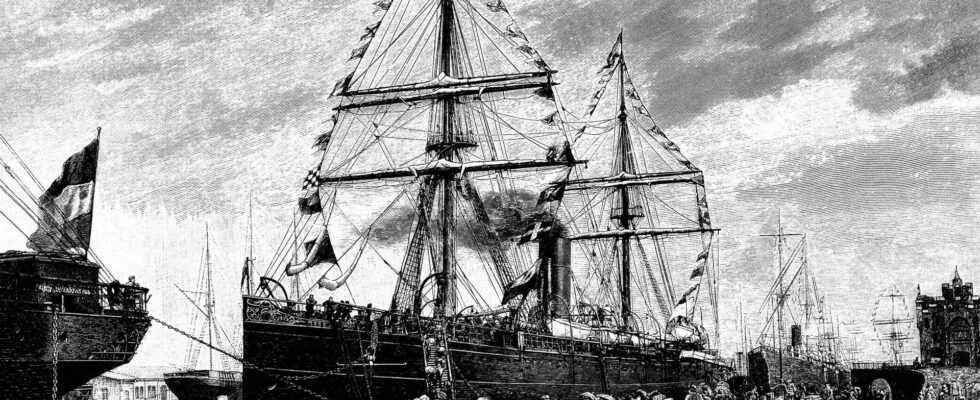How the disaster in Bremerhaven happened
The survivors were taken to Southampton, where they awaited the next steamship that was to take them to the United States: the “Mosel” from Bremerhaven. But things turned out differently. A wagon with heavy crates and barrels was still parked at the pier. One of the barrels was dark brown oak and iron-shod. The container weighed 1.3 tons and, according to the bill of lading, contained expensive iron parts. What exactly happened can no longer be reconstructed, but the barrel probably fell on the street after it slipped from a dock worker’s crane.
Then there was a huge explosion. As is known today, the impact triggered an ignition mechanism in the barrel filled with Lithofracteur. The explosive mixture Lithofracteur was a modification of Alfred Nobel’s (1833-1896) dynamite recipe, but it had a higher explosive power.
In the afternoon, a few hours after the explosion, a seriously injured man was found in a 1st class cabin and taken to the hospital. At first he was thought to be a victim of the explosion, but the police found a revolver in the cabin with two cartridges missing. Apparently the man tried to take his own life. It soon turned out that the barrel in question belonged to him.
The motive was insurance fraud
The man was a Scottish-born Canadian, his name was Alexander Keith Jr. In Europe he posed as William King Thomas. Keith was deep in debt and hit upon the idea of committing insurance fraud. In her biography of Keith, The Dynamite Fiend, literary historian Ann Larabee traces the events. Keith had a worthless cargo insured for a high price, which was then to be lost in a bomb attack at sea. However, it was planned that the bomb would only explode after a few days – in the middle of the Atlantic. He himself wanted to disembark in Southampton, where the survivors of the “Deutschland” accident were to board the “Mosel”.
